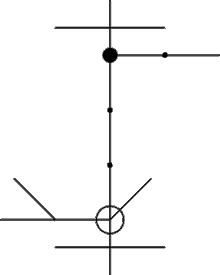SHOTOKAN KARATE
Friday, June 3, 2016
SHOTOKAN KARATE: What Is The Karate?
SHOTOKAN KARATE: What Is The Karate?: In Okinawa, a miraculous and mysterious martial art has come down to us from the past. It is s...
Saturday, May 21, 2016
What Is The Karate?
 In Okinawa, a miraculous and mysterious martial art has come down to us from the past. It is said that one who masters its techniques can defend himself readily without resort to weapons and can perform remarkable feats: the breaking of several thick boards with his fist or ceiling panels of a room with a kick. With his shuto ("sword hand") he can kill a bull with a single stroke; he can pierce the flank of a horse with his open hand; he can cross a room grasping the beams of the ceiling with his fingers, crush a green bamboo stalk with his bare hand, shear a hemp rope with a twist, or gouge soft rock with his hands.
In Okinawa, a miraculous and mysterious martial art has come down to us from the past. It is said that one who masters its techniques can defend himself readily without resort to weapons and can perform remarkable feats: the breaking of several thick boards with his fist or ceiling panels of a room with a kick. With his shuto ("sword hand") he can kill a bull with a single stroke; he can pierce the flank of a horse with his open hand; he can cross a room grasping the beams of the ceiling with his fingers, crush a green bamboo stalk with his bare hand, shear a hemp rope with a twist, or gouge soft rock with his hands.
Some consider these aspects of this miraculous and mysterious martial art to be the essence of Karate-do. But such feats are a small part of karate, playing a role analogous to the straw-cutting test of kendo [Japanese fencing], and it is erroneous to think that there is no more to Karate-do than this. In fact, true Karate-do places weight upon spiritual rather than physical matters, as we shall discuss. True Karate-do is this: that in daily life, one's mind and body be trained and developed in a spirit of humility; and that in critical times, one be devoted utterly to the cause of justice.
Friday, May 20, 2016
Kata
Main article: Karate kata

Embusen of Heian Shodan (fromBest Embusen: Shotokan)
Kata is often described as a set sequence of karate moves organised into a pre-arranged fight against imaginary opponents. The kata consists of kicks, punches, sweeps, strikes and blocks. Body movement in various kata includes stepping, twisting, turning, dropping to the ground, and jumping. In Shotokan, kata is a performance or a demonstration, with every technique potentially a killing blow (ikken hisatsu)—while paying particular attention to form and timing (rhythm). As the karateka grows older, more emphasis is placed on the health benefits of practicing kata, promoting fitness while keeping the body soft, supple, and agile.
Several Shotokan groups have introduced kata from other styles into their training. The original Shotokan kata syllabus is introduced in Funakoshi's book Karate-do Kyohan, which is the Master Text of Shotokan karate. Dai Nihon Karate-do Shotokai is the official representative of Shotokan karate. Japan Shotokai's kata syllabus is the same as established in "Karate-do Kyohan" added Gigo Funakoshi's staff kata Matsukaze No Kon.[10] When the JKA was formed, Nakayama laid down 27 kata as the kata syllabus for this organisation. Even today, thousands of Shotokan dojo only practice 26 of these 27 kata. The standard JKA kata are: Taikyoku shodan(sometimes termed Kata Kihon or Kihon Kata, the name has been discontinued in some Shotokan dojos) (太極初段), Heian shodan (平安初段), Heian nidan (平安二段), Heian sandan (平安三段), Heian yondan (平安四段), Heian godan (平安五段), Bassai dai (披塞大), Jion (慈恩), Enpi (燕飛), Kanku dai (観空大), Hangetsu (半月), Jitte (十手), Gankaku (岩鶴), Tekki shodan (鉄騎初段), Tekki nidan (鉄騎二段),Tekki sandan (鉄騎三段), Nijūshiho (二十四步), Chinte (珍手), Sōchin (壯鎭), Meikyō/Rōhai (明鏡), Unsu (雲手), Bassai shō (披塞小),Kankū shō (観空小), Wankan (王冠), Gojūshiho shō (五十四歩小), Gojūshiho dai (五十四歩大), and Ji'in (慈陰)
Information
 Shotokan (松濤館 Shōtōkan?) is a style of karate, developed from various martial arts by Gichin Funakoshi (1868–1957) and his son Gigo (Yoshitaka) Funakoshi (1906–1945). Gichin was born in Okinawa[1] and is widely credited with popularizing "karate do" through a series of public demonstrations, and by promoting the development of university karate clubs, including those at Keio,Waseda, Hitotsubashi (Shodai), Takushoku, Chuo, Gakushuin, and Hosei.[2]
Shotokan (松濤館 Shōtōkan?) is a style of karate, developed from various martial arts by Gichin Funakoshi (1868–1957) and his son Gigo (Yoshitaka) Funakoshi (1906–1945). Gichin was born in Okinawa[1] and is widely credited with popularizing "karate do" through a series of public demonstrations, and by promoting the development of university karate clubs, including those at Keio,Waseda, Hitotsubashi (Shodai), Takushoku, Chuo, Gakushuin, and Hosei.[2]
Funakoshi had many students at the university clubs and outside dojos, who continued to teach karate after his death in 1957. However, internal disagreements (in particular the notion that competition is contrary to the essence of karate) led to the creation of different organisations—including an initial split between the Japan Karate Association (headed by Masatoshi Nakayama) and theShotokai (headed by Motonobu Hironishi and Shigeru Egami), followed by many others—so that today there is no single "Shotokan school", although they all bear Funakoshi's influence
Subscribe to:
Posts (Atom)







